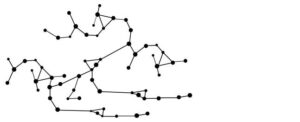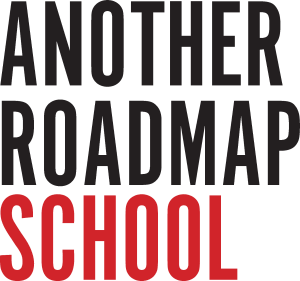
Sobre el grupo
Los grupos que cooperan en el Clúster de Educación Popular: Re-actualizaciones, Educación Artística/Movimientos Sociales se encuentran en las ciudades de Barcelona/Madrid, España; Brasilia/São Paulo, Brasil; Bogotá, Colombia; Liubliana, Eslovenia; San Juan, Puerto Rico; y Quito, Ecuador. Estamos conectados principalmente con la educación superior, la mediación en galerías y comunidades en museos, las prácticas artísticas y la investigación militante.
Hemos reconocido en los diferentes contextos geopolíticos el papel que juegan las políticas culturales, educativas y patrimoniales en la configuración de las ciudades contemporáneas. La “explotación del capital cultural de las ciudades”, la implementación de “laboratorios de innovación”, los procesos de gentrificación, las industrias creativas y turísticas están cambiando los paisajes urbanos y moldeando la relación entre las instituciones educativas/culturales y los territorios en los que están ubicadas, exigiendo la flexibilización y adaptación tanto de los trabajadores culturales como de los habitantes al modelo dominante de desarrollo económico.
En este contexto nos preguntamos:
¿Qué alianzas podemos construir entre las prácticas artísticas y educativas para fomentar la regeneración de los conocimientos locales, las formas de aprendizaje colectivo y la reorganización de las instituciones educativas y culturales, para contrarrestar el enfoque homogeneizador y orientado al mercado de los discursos supranacionales?
Con este objetivo en mente, planeamos revisar las genealogías y las contribuciones teóricas y metodológicas de los educadores populares en diferentes contextos y momentos históricos, prestando atención a sus relaciones con los movimientos sociales, y a las resistencias e influencias que desarrollaron en relación con las instituciones. Con este enfoque, pretendemos tomar reflexiones, recursos y herramientas de estas historias para las prácticas y disputas contemporáneas.
¿Podemos, al hacer este ejercicio, contribuir a una comprensión de la educación y la cultura como parte de una política aún por construir del común?
Mientras cada grupo lleva a cabo su proyecto de investigación de acuerdo con las características del lugar, el clúster es una plataforma para la convergencia, el intercambio, los comentarios y para generar cooperativamente
unidades de aprendizaje.
Nosotros:
- Compartiremos referencias teóricas y herramientas metodológicas.
- Compartiremos archivos e historias de la educación popular de nuestros diferentes contextos e intercambiaremos mediante informes periódicos sobre el progreso, los problemas y los éxitos en el proceso de explorar los archivos.
- Intercambiaremos reflexiones sobre cómo funcionan las instituciones en los diferentes contextos y momentos históricos, para identificar factores y estrategias para expandir las posibilidades de transformación institucional.
- Organizaremos reuniones físicas y virtuales para formación y compartir el proceso de investigación.
- Reuniremos, editaremos, diseñaremos y publicaremos unidades de aprendizaje,recursos educativos abiertos, basados en el proceso y los resultados de las diferentes investigaciones.
ABOUT/ ENG
The groups cooperating in the Cluster Popular Education: Re-actualizations, Arts Education/Social Movements are located in the cities Barcelona/Madrid, Spain; Brasília/São Paulo, Brazil; Bogotá, Columbia; Ljubljana, Slovenia; San Juan, Puerto Rico; and Quito, Ecuador. We are connected basically to higher education, gallery and community mediation in museums, artistic practices and militant research.
We have recognized in the different geopolitical contexts the role that cultural, educational and heritage policies play in the configuration of contemporary cities. The “exploitation of the cultural capital of cities”, the implementation of “innovation laboratories”, processes of gentrification, creative and tourism industries are changing urban landscapes and shaping the relationship between educational/cultural institutions and the territories they are located in, demanding the flexibilization and adaption of cultural workers and habitants alike to the dominant model of economic development.
In this context we ask:
Which alliances can we build between artistic and educational practices to foster the regeneration of local knowledges, forms of collective learning, and the re-organization of educational and cultural institutions , to counter the homogenising and marketing-oriented approach of supranational discourses?
With this aim in mind, we plan to revisit the genealogies and the theoretical and methodological contributions of popular educators in different contexts and historical moments, paying attention to their relations with social movements, and to the resistances and influences they developed concerning the institutions. With this approach, we intend to take up reflections, resources and tools from these histories for contemporary practices and disputes.
Can we, in doing this exercise, contribute to an understanding of education and culture as a part of a yet to be constructed politics of the common?
While every group carries out its research project in accordance with the characteristics of the location, the cluster is a platform for convergence, exchange, feedback and for cooperatively generating learning units
.
We will:
- share theoretical references and methodological tools
- share archives and histories of popular education from out different contexts and exchange via periodic reports on the progress, problematics and successes in the process of exploring the archives.
- exchange reflections on how institutions work in the different contexts and historical moments, to identify factors and strategies to expand possibilities of institutional transformation.
- organize physical and virtual meetings for training/ and sharing the research process.
- Assemble, edit, design and publish learning units, open educational resources, based on the process and the results of the different inquiries.
